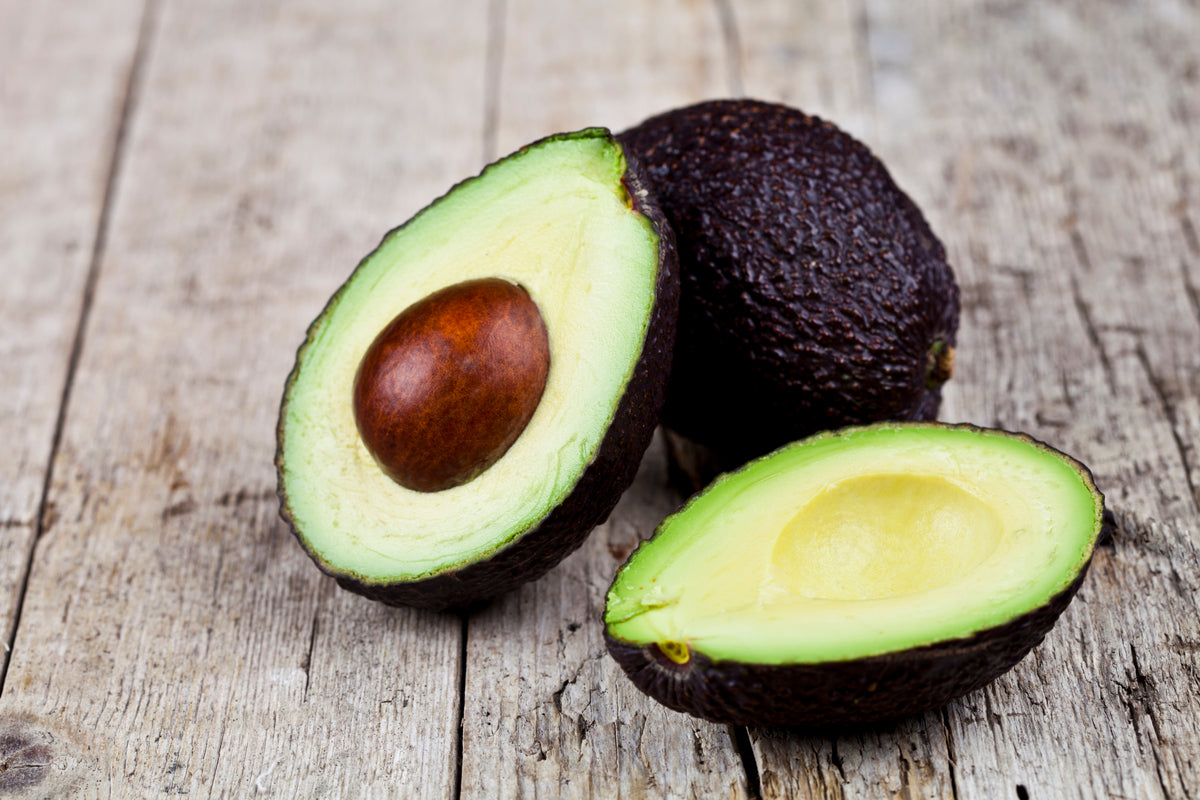
Quick Synopsis
It can be a real bummer to slice open an avocado only to find it’s not quite ripe...or worse, brown and mushy. But good news! With these simple tips and tricks, you can identify a ripe avocado in no time (AND learn what to do when a less than perfect one winds up on your cutting board).
The Full Story
Avocados may be en vogue recently (thank you avocado toast) but this thick-skinned berry is more than just a trend. Whether you’re eating one raw, cooking with it, or using it to make guacamole, your avocado is absolutely packed with vital nutrition. Not to mention it spreads like butter, can replace eggs in vegan recipes, and tastes absolutely delicious with pretty much everything.
Want vitamins? Avocados have 20 different varieties, with special emphasis on vitamins B, C, and E. Looking for minerals? No problem. Avocados are rich in potassium, lutein, and folate (all of which the body needs). How about fiber? A single cup of avocado contains 10.1 grams of dietary fiber, to help you feel satisfied longer.
The only downside to avocados: unripe avocados.
Not to fear! You don’t have to gamble when you pick out your avocados. We’re here to tell you how to tell if an avocado is ripe, so you come home with the perfect avocado, every time.
Do judge an avocado by its cover
They say not to judge a book by its cover — but avocados aren’t books, and short of cutting one open in the produce aisle, judging the cover (the skin) of the avocado is the best way to determine its quality. When it comes to identifying a ripe avocado, there are three outside indicators you’ll want to take into account:
1. Color
Yes, avocados are green. But within that category, there’s an entire range of possible tints and hues.
Usually, the skin-color darkens as the avocado ripens so darker skinned avocados are riper than lighter skinned ones. Really dark avocado skin (such as very dark brown or black) indicate an overripe avocado, or even one that’s rotten. Want to eat it right away? Look for one that is dark green, but, you know, still green.
If you want to keep the avocado for a few days, pick a forest green variety with darker speckles. You can leave a forest-green avocado sitting out on a counter at room temperature, and it will ripen nicely in a day or two.
2. Firmness
An unripe avocado will be extremely firm, with little to no give. On the other hand, an over-ripe avocado will be very soft, to the point where even a gentle squeeze may cause indentations that don’t bounce back.
A ripe avocado will be yielding without being mushy. It should also have a uniform softness throughout; uneven soft spots can indicate bruising — possibly from other shoppers squeezing too hard. (Note: always wash avocados at home even though you don’t eat the skin because they’re often handled by other people at the store.)
3. Texture
Color isn’t everything! Avocados get bumpier and more textured with age. So while you’re giving one a gentle squeeze, feel the skin itself and take note of the texture. If your avocado is smooth rather than bumpy, it’s probably not ready to be eaten.
Once you get an avocado home, you can do a stem test before eating, too. If the avocado still has part of its stem, you can usually tell what’s happening under the skin. Peel back the stem from the rest of the avocado. If it comes away easily and you can see a healthy green underneath, then you should be good to go. If it’s hard to remove, the avocado probably isn’t ripe yet. Or, if it’s brown underneath, the avocado is past its prime.
And that’s how to tell if an avocado is ripe. Easy peasy avocado squeezy. But let’s say for a second you don’t get it right. What do you do when your avocado isn’t the perfect ripeness? Well, we’ve got you covered there, too.
When Life Gives You Unripe Avocados...
If your avocado isn’t ripe yet, the inside will be firm and the pit will be hard to remove. But remove it anyway, because that avocado can still do wonders for smoothies, as an addition to scrambles, or grated and used in salads. Consider the MamaSezz Portobello Plant-Based "BLT" Sandwich. Sliced thin, not-quite-ripe avocado would work just fine!
Alternatively, if you don’t want to waste an overripe avocado, you can still use it in smoothies, to make guacamole, or as a plant-based substitute for eggs and cheese. This MamaSezz Fiber-licious Vanilla Smoothie recipe is the perfect time for even a past-due avocado.
Just remember there’s a big difference between “overripe” and “spoiled.” If your avocado is rotten, throw it out.
Key Takeaways
It will probably take you a little bit of practice, but knowing how to tell if an avocado is ripe is all about knowing what to look for:
- It’s usually just right when it’s dark green, slightly soft when squeezed, and has a bumpy exterior.
- Underripe avocados just need a little time (or can work well in smoothies!).
- Overripe? No worries! Smoothie to the rescue again -- or whip up some guac!
- Avocados are a delicious, nutritious addition to the whole-food plant-based diet. Try them as a topping with MamaSezz Turmeric Chickpea Scramble, MamaSezz Black Bean Bowl, and Millie’s Chili, or really, on just about anything!
